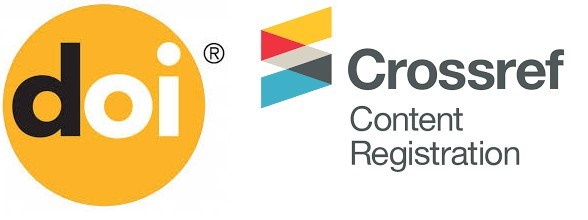Penggunaan Media Pembelajaran Spinning Wheel dalam Pembelajaran Qawaid Nahwu
DOI:
https://doi.org/10.32699/liar.v4i2.1495Keywords:
Learning Qawaid Nahwu, Spinning Wheel, Learning MediaAbstract
Arabic is a field of study that is taught at the junior high school level or equivalent. Arabic learning at this level is directed at mastering the four language skills which include listening skills, speaking skills, reading skills and writing skills. However, apart from these four skills, there are also several elements that we need to pay attention to the rules. This study aims to determine the effectiveness of the use of the spinning wheel media in learning Arabic, especially qawaid nahwu. The methods of collecting data are observation, interviews, tests, and documentation. The approach used is descriptive quantitative with percentage calculations. The result of this research is that the use of the spnning wheel media can improve the qawaid nahwu learning process in the seventh grade training of students of the Darul Qur'an Wal Islamic Boarding School.
References
Ginnis, Paul. Trik dan Taktik Mengajar, Jakarta, PT Indexs, 2008, hlm. 190. 2008 ed. Jakarta, PT Index.
Hakim, Arif Rahman. “Mempermudah Pembelajaran Ilmu Nahwu Pada Abad 20.” Jurnal Al Maqayis 1, no. 1 (2 September 2014).
Hasanuddin, Muhammad Irfan. “Ta’lim Fi’il Amr min Khilal Kitab Muqarrar al-Lugah al-’Arabiyyah fi al-Fashl al-Tsamin fi al-Madrasah al-Tsanwiyah Batu Sitanduk fi Manthiqah Walenran al-Syimaliyyah Mudiriyyh Luwu (dirasah sharfiyyah thatbiqiyyah).” AL IBRAH: Journal of Arabic Languange Education 1, no. 1 (25 Juli 2018).
Muassomah, Muassomah, dan Ma’rifatul Munjiah. “Learning Qawaid Through Language Game Adlif Kalimatan for Students of Arabic Language and Literature at UIN Maulana Malik Ibrahim Malang.” ALSINATUNA 5, no. 1 (15 Mei 2020): 58–71.
Muhaimin, Munawaroh. Panduan Praktis Membaca Kitab Kuning Navasi (nahwu Inovasi) Teori & Praktek Jilid I. 2019 ed. Sulawesi Selatan: Yayasan Ahmar Cendikia Indonesia, t.t.
Rahman, Anwar Abd. “Sejarah Ilmu Nahwu Dan Perkembangannya.” Jurnal Adabiyah 10, no. 1 (11 Juni 2010): 98–109.
Rappe, Rappe. “Hal-Ihwal Jumlah Ismiyah Dalam Bahasa Arab.” Shaut al Arabiyyah 6, no. 1 (24 Agustus 2018): 1.
Rasyidi, Zam Zam. “Pembelajaran Qawaid: Perspektif Teori Kognitif pada Pondok Pesantren Raudhatut Thalibin Kalimantan Selatan.” Al-Ta’rib : Jurnal Ilmiah Program Studi Pendidikan Bahasa Arab IAIN Palangka Raya 8, no. 1 (24 Juni 2020): 103–16.
Razin, Abu, Umu. Ilmu Nahwu Untuk Pemula. 2014 ed. Pustaka Bisa, t.t.
Ridlo, Ubaid. “Model Pembelajaran Bahasa Arab Materi Al-Qawa’id al-Nahwiyyah.” Al-Ma‘rifah: Jurnal Budaya, Bahasa, Dan Sastra Arab 12, no. 2 (2 Oktober 2015): 46–57.
Sa’adah, Neli, dan Khasan Aedi. “PENGARUH METODE DEDUKTIF DENGAN MENGGUNAKAN MEDIA KARTU DALAM MEMAHAMI ‘JUMLAH FI’LIYAH’ (Ma’had Al-Jami’ah IAIN Syekh Nurjati Cirebon).” EL-IBTIKAR: Jurnal Pendidikan Bahasa Arab 7, no. 2 (19 November 2018): 98–114.
Sadat, Anwar. “LINGKUNGA BAHASA SEBAGAI MEDIA PEMBELAJARAN BAHASA ARAB (Ikhtiar Membangun Pembelajaran Yang Efektif Dan Produktif).” AL-AF’IDAH: Jurnal Pendidikan Bahasa Arab Dan Pengajarannya 1, no. 1 (15 September 2017): 4–29.
Sehri, Ahmad. “METODE PENGAJARAN NAHWU DALAM PENGAJARAN BAHASA ARAB.” HUNAFA: Jurnal Studia Islamika 7, no. 1 (15 Juni 2010): 47–60.
Setyawan, Cahya Edi. “PEMBELAJARAN QAWAID BAHASA ARAB MENGGUNAKAN METODE INDUKTIF BERBASIS ISTILAH-ISTILAH LINGUISTIK.” Journal Al-Manar 4, no. 2 (1 Desember 2015).
Downloads
Published
Issue
Section
License
Authors who publish with this journal agree to the following terms:
a. Authors retain copyright and grant the journal right of first publication with the work simultaneously licensed under a Creative Commons Attribution-ShareAlike 4.0 International License. that allows others to share the work with an acknowledgement of the work's authorship and initial publication in this journal.
b. Authors are able to enter into separate, additional contractual arrangements for the non-exclusive distribution of the journal's published version of the work (e.g., post it to an institutional repository or publish it in a book), with an acknowledgement of its initial publication in this journal.
c. Authors are permitted and encouraged to post their work online (e.g., in institutional repositories or on their website) prior to and during the submission process, as it can lead to productive exchanges, as well as earlier and greater citation of published work (See The Effect of Open Access).












